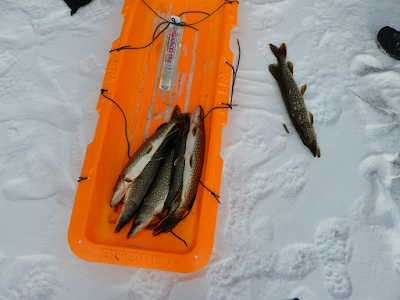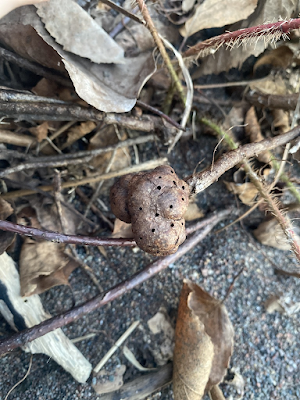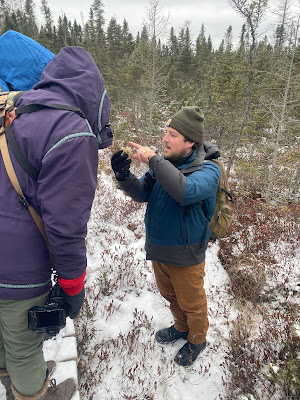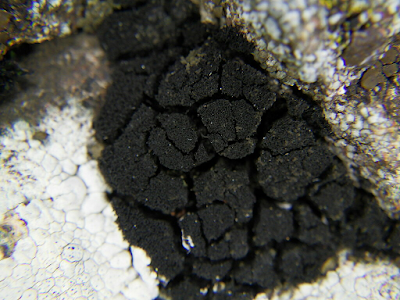Ice Fishing at Tettagouche Lake

We made our way to Tettagouche Lake to go ice fishing with Kurt Mead today. The lake was pretty slick with ice and essentially no snow, it was a lot of fun to skate around in our boots. On this sunny day, you could really hear the ice shifting from the temperature differential, especially with no snow to cushion the noise, it was pretty cool but also somewhat alarming at times. Overall, we caught quite a few fish - I believe 9 was the total number, all northerns. Some of the northerns were slightly infected with black spot disease (Neascus sp.), a flatworm which is a rather benign parasite. Like many parasites it has quite a complex, interesting life cycle. Eggs enter aquatic ecosystems in bird poop. When the eggs hatch they infect snails, then as they begin to mature they find their fish hosts (affecting all species of fish in MN to my knowledge). Finally, when a bird eats an infected fish the parasites mature and begin the cycle all over again. It's amazing how evolution selecte...




